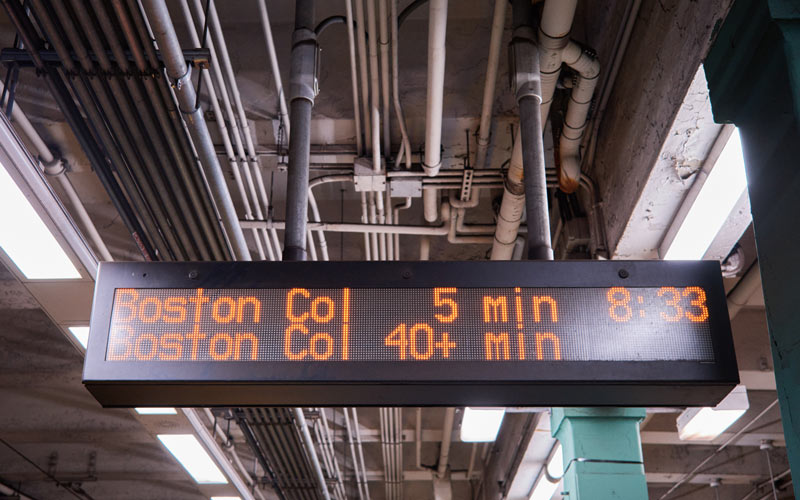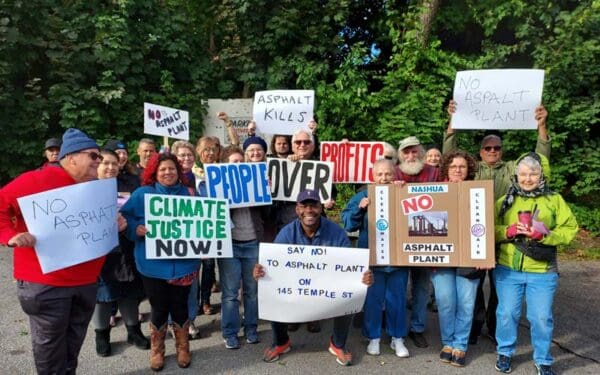
MBTA commuters knows all too well the frustration of slow zones across our public transit system. Photo: Jarvis Chen.
Over the last year, slow zones have become quite common, and the MBTA website confirms that these inconveniences continue. As regular riders of Boston’s subway, we know the frustration of slow zones all too well. Whether you’re commuting on the Red Line, Orange Line, or any other part of the transit network, it’s hard to escape the effects of these reduced-speed zones. But what’s the reason behind them? And better yet, how can the MBTA prevent them from happening in the first place?
Why Does the MBTA Set Slow Zones?
Simply put, the MBTA puts slow zones in place to protect passengers’ safety. But the reasons behind this decision can vary.
Signal problems, structural deficiencies, and vehicle malfunctions often explain slow zones – including many current ones. That’s why regular maintenance and repair work plays such a critical role in keeping trains running safely and at full speed.
A recent report highlighted how the absence of proactive maintenance has led to the many slow zones we’ve been experiencing. After leaving repairs to tracks undone for years, the MBTA scrambled to make some quick fixes in 2022. But in a rush to finalize the repairs, workers missed more than 100 track defects during two quarterly inspections in 2022. As a result, the MBTA was forced to set dozens of speed restrictions along multiple lines, including the new branch of the Green Line Extension.
But a slow zone doesn’t always mean problems ahead. Sometimes, a slow zone signals that the MBTA has completed critical repairs, maintenance work, or major improvements. Take the Orange Line repairs, for example. After a month-long shutdown, trains had to move slower because tracks needed time to settle before cars could run at full speed again.
Delays Take a Toll on Commuters
Beyond mere inconveniences, slow zones jeopardize the livelihoods of those who rely on public transit to access jobs, schools, and healthcare.
Slow zones aren’t just about longer commutes. The financial toll on commuters is not to be underestimated. As people lose valuable time waiting for delayed trains, they also lose money due to missed wages. The longer commutes and frequent delays add up, impacting people’s ability to be punctual for work or school, picking up kids from childcare, getting to the doctor, and other essential obligations. Delays can even force riders to seek expensive alternative options that further drain their wallets.
How Does Climate Change Impact MBTA Slow Zones?
The MBTA is already struggling to eliminate slow zones. The extreme weather bombarding our region has worsened this problem.
Last summer, suffocating temperatures, sometimes soaring to more than 100 degrees, became more common. I know because I’ve stood on a sweltering subway platform, planted in front of a noisy giant fan, hoping to find relief. All while anxiously checking the electronic board displaying a cryptic, unchanging “20+ minutes” wait time for the next train.
What does heat have to do with slow zones? Overheated tracks buckle and expand, increasing the risk of train derailment. To prevent the risk of accidents, the MBTA slows trains in the summer heat. As a result, lines that intersect with major transportation hubs – like the Red Line – become overcrowded, affecting the entire system. And when riders pack into overcrowded trains in the summer heat, they risk heat exhaustion and heatstroke.
Similarly, unpredictable winter weather also can set back our transit system. In 2015, Greater Boston riders endured 56 consecutive days in which the MBTA failed to put all cars in service. But, even without major snowstorms, every year, winter weather exposes a frail transit infrastructure that can lead to reduced speeds.
How Can the MBTA Address Slow Zones?
Last November, the MBTA announced an ambitious plan to eliminate 191 speed restrictions by the end of 2024. So far, the agency has managed this task effectively and has removed dozens of slow zones from the system. But the MBTA needs to start thinking ahead to rid the system of slow zones for good. It’s time to start playing offense, not defense.
For starters, the MBTA must invest in safety. That includes prioritizing climate resilience – an economic and social justice issue because reliable transportation connects communities to life-essential opportunities. For many, lacking reliable transportation means losing access to critical resources, including education, job, and healthcare opportunities. In fact, transit delays disproportionately reduce job access for riders of color, those with low incomes, and people with limited English proficiency.
We deserve a transit system that doesn’t slow down every time the weather changes.
CLF in Action
CLF is calling on state regulators, legislators, and the MBTA to invest in transportation safety. That includes preparing proactively for the impacts of climate change. On top of securing adequate funding for maintenance, we need to weatherproof our transit system today to withstand the extreme weather conditions already here.
Our goal is clear: to provide Boston with a reliable, efficient, and safe public transit system that can endure the test of use, time, and weather. By investing in transportation safety, we can ensure a future where everyone can reach their destination on time.




